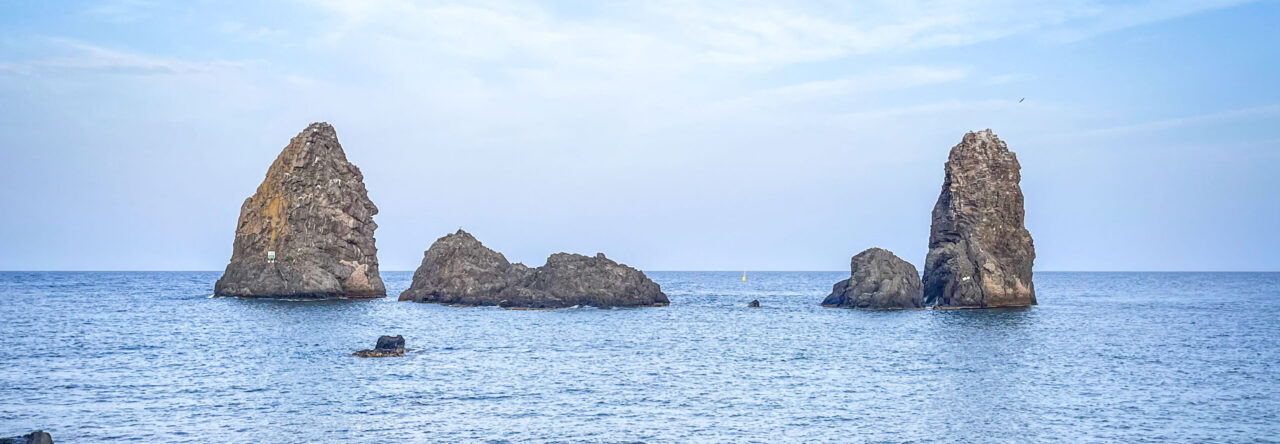
After our day exploring Yellowstone’s geothermal areas, we headed to Grand Teton National Park. When planning this trip, Grand Teton was not on my “must-see” list. It was more important to be me that we saw everything we could at Yellowstone, but we covered most of what we wanted to see in our first two days, so we hopped in the car and headed for Jackson. After walking over ten miles the day before, it was nice to sit in the car for a bit of a drive. Coming from the Old Faithful Inn, we didn’t rush in the morning, so parking for most of the popular hiking spots was full by the time we got there, so this was just a day for driving the loop road and seeing the Tetons.
One thing that makes the Tetons so unique is that these mountains seem to pop up out of nowhere. There are no foothills surrounding them. The drive from Yellowstone on the John D. Rockefeller Jr. Memorial Parkway was not a hilly or incredibly interesting drive and then just all of a sudden there are these three lone mountains. Its a very unique landscape and I can understand why Mr. Rockefeller fought so hard to make this area a National Park.

Just like with the other areas we visited on this trip, we used the GyPSy app to guide our exploration of the Tetons. One place I probably wouldn’t have explored without the app, was the winding Signal Mountain Drive. The view of the wildflowers and the mountains in the distance made it a beautiful place to stop and stretch your legs (above)!
 In Grand Teton, the one place I knew I wanted to stop at is the iconic Mormon Row. The old buildings here are what I picture when I think of Grand Teton. At the turn of the 19th century, 27 Mormon homesteaders headed to the area that is now a part of Grand Teton National Park, to live off the land. The land is surprisingly fertile and the homesteaders worked for years, digging ditches and levees to improve the irrigation for their crops. Water still flows in these ditches today. By the 1950’s most of the families sold their land to expand Grand Teton National Park. Mormon Row was added to the National Register of Historic Places in 1997.
In Grand Teton, the one place I knew I wanted to stop at is the iconic Mormon Row. The old buildings here are what I picture when I think of Grand Teton. At the turn of the 19th century, 27 Mormon homesteaders headed to the area that is now a part of Grand Teton National Park, to live off the land. The land is surprisingly fertile and the homesteaders worked for years, digging ditches and levees to improve the irrigation for their crops. Water still flows in these ditches today. By the 1950’s most of the families sold their land to expand Grand Teton National Park. Mormon Row was added to the National Register of Historic Places in 1997.
Another iconic stop in Grand Teton is at the Snake River Overlook (top). There is a famous Ansel Adams photograph of this location that was taken in 1942. Of course, the trees have grown a bit in the last 80 years so it doesn’t look exactly like it did when Adams stood there, but it was really fun to try to find the right perspective to match that iconic shot!

Bison in Grand Teton National Park
This drive through Grand Teton was fun, but I know we barely scratched the surface of the park. Whenever we return to Yellowstone, we will have to devote more time to Teton and getting off the beaten path. I would love to get out on the water of Jenny Lake and stay in one of the iconic park lodges. We never made it to the town of Jackson either, so I would like to get to explore that area too!
Thanks for stopping by! Be sure to come back next week when I end our day with more geysers at Yellowstone! To read more about this trip, check out the Epic National Park Road Trip. To read about some of our previous trips, visit my Trips Page. If you like my photos be sure to “like” my Facebook Page and follow me on Instagram! You can purchase prints on Etsy and Fine Art America. To see inside my camera bag, check out my updated Gear Page.
Pin This:








